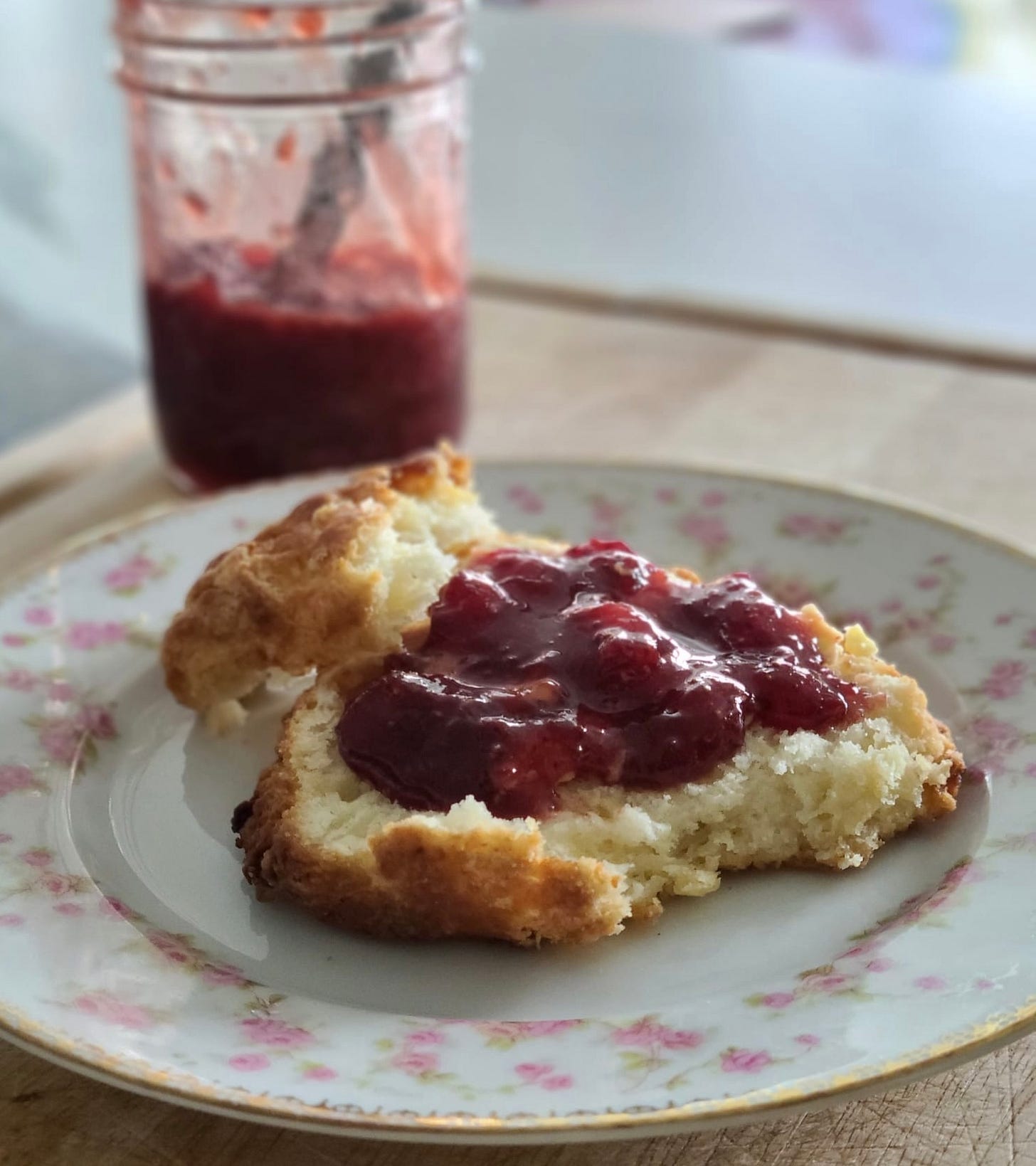Best-laid plans
and a recipe for a quick strawberry jam that you can make on the spur of the moment
"To achieve great things, two things are needed: a plan and not quite enough time."
Leonard Bernstein, American conductor, composer, pianist, music educator, author, and humanitarian
Leonard Bernstein was no slouch. Not only did he do multiple things—he did all of them extremely well.
I often wonder what the master plan of such a person might look like. Is it organized, calendarized, itemized? Does it have due dates and deadlines? Or is it one glorious mess of ideas and inspirations, a mind map that spirals in a million different directions?
A fine mess
Perhaps it’s no surprise that I subscribe to the latter notion. I have a whole pile of ideas that tumble over each other like fledging kittens, paws waving in the air, mewling to get my attention. It’s not the most noisy that win out. The ones that stick aren’t always the most practical or doable, but they excite me with the art of the possible and the unknown.
Time and experience, of course, are the wisest teachers, and even I have seen that haphazard notions may simply fizzle out, one Roman candle at a time. Yet still, the spark of an idea, once planted, can take root and grow like mushrooms under the cover of darkness. The trick is knowing when to cultivate and nurture them further.
Narrowing the field
Paradoxically, one of the things that may stand in the way of getting to anything great is our incessant need to compare ourselves to others. For every achievement or accomplishment that I might have, there’s likely always going to be someone who has done more, or done it better. The futility of that comparison not only takes away from our small victories; it can hobble us from trying to keep trying.
Instead of corralling all of those ideas and plans, zeroing in on just a few—or even one—can bring satisfaction just the same. Small victories matter. Being the ready cheerleader and support team for those visionaries is equally meaningful.
Having lofty dreams and plans is important. Even if you don’t reach that star or planet, imagine what you’ll see on the way there.
Three-step strawberry jam
From The Spruce Eats
Makes one pint
Two weeks ago I made orange marmalade with my dear friend Susan and her mother Maureen. While we had a lot of fun, marmalade requires lots of prep; it’s not an endeavour to be undertaken lightly.
Strawberry jam, on the other hand, can be made on a whim. When you’re over-eager and buy loads of strawberries, this jam will make quick work out of the ones that linger a little too long past their best buy date.
Best of all you don’t need to process this jam in a hot water bath. It will keep for three weeks in the refrigerator, but I doubt if it will last that long. Of course go ahead and preserve the jam to enjoy year round too.
Note: It really is important to get the jam to the right “set” temperature. If you don’t have an instant read thermometer, the two methods below are an easy way to test if the jam is ready. It may take you longer but be patient.
Freezer Test: Put a few small plates in the freezer. Near the end of the cooking time, begin to test. Drop a small dollop of jam on an ice-cold plate. Put it back in the freezer for about 2 minutes. If the jam forms a "skin" and wrinkles slightly when gently prodded with your finger, the jam is done. If it is still runny and your finger easily makes a trail through it, continue cooking and test again after few more minutes.
Cold Spoon Test: Put a few metal spoons in the refrigerator. Dip a cold spoon into the boiling mixture and lift it over the pan. Let it run off the spoon. When a few drops come together and "sheet" off the spoon, the jam is done.
Ingredients
1 pint strawberries (about a 1-pound container)
1¼ cups granulated sugar
2 tablespoons fresh lemon juice
Wash and hull the strawberries. Discard the caps and stems.
Slice or chop the strawberries, and put them in a medium stainless steel or enamel-lined saucepan.
Add the sugar and place the pan over medium-low heat. Bring the mixture to a boil, and then add the lemon juice. Keep the mixture at a steady boil for about 10 to 15 minutes, or until the jam reaches 220 F on a candy thermometer. There are other ways to test for jelling. See note above.
Stir the jam frequently, and drag the spoon over the bottom of the pan to make sure it isn't scorching.
Ladle or funnel into a one-pint jar or container. Cover, let cool and refrigerate. Once you begin using the jam, refrigerate it as soon as possible after each use for the longest storage time (about 3 weeks). It will also keep in the freezer for 2-3 months.







I recently made strawberry jam on a whim as well! Had no idea how simple it was.